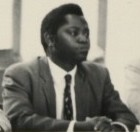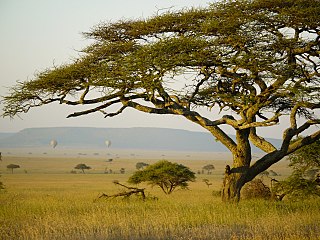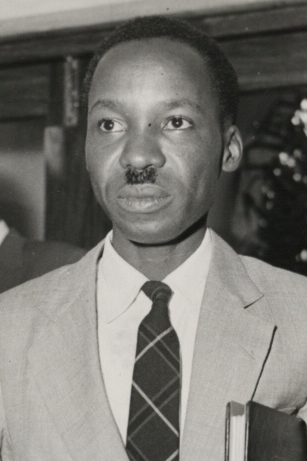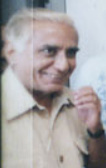
Dar es Salaam is the largest city and financial hub of Tanzania. It is also the capital of the Dar es Salaam Region. With a population of over nine million people, Dar es Salaam is the largest city in East Africa by population and the sixth-largest in Africa. Located on the Swahili coast, Dar es Salaam is an important economic center and one of the fastest-growing cities in the world.
The modern-day African Great Lakes state of Tanzania dates formally from 1964, when it was formed out of the union of the much larger mainland territory of Tanganyika and the coastal archipelago of Zanzibar. The former was a colony and part of German East Africa from the 1880s to 1919 when, under the League of Nations, it became a British mandate. It served as a British mir II]], providing financial help, munitions, and soldiers. In 1947, Tanganyika became a United Nations Trust Territory under British administration, a status it kept until its independence in 1961. The island of Zanzibar thrived as a trading hub, successively controlled by the Portuguese, the Sultanate of Oman, and then as a British protectorate by the end of the nineteenth century.

Julius Kambarage Nyerere was a Tanzanian politician, anti-colonial activist, and political theorist. He governed Tanganyika as prime minister from 1961 to 1962 and then as president from 1962 to 1964, after which he led its successor state, Tanzania, as president from 1964 to 1985. He was a founding member and chair of the Tanganyika African National Union (TANU) party and of its successor, Chama Cha Mapinduzi, from 1954 to 1990. Ideologically an African nationalist and African socialist, he promoted a political philosophy known as Ujamaa.

Rashidi Mfaume Kawawa was a Tanzanian politician who was the second Tanganyikan prime minister from 22 January 1962 to 9 December 1962 and the first Tanzanian prime minister from 17 February 1972 until 13 February 1977, succeeded by Edward Sokoine.

Mara Region is one of Tanzania's 31 administrative regions. The region covers an area of 21,760 km2 (8,400 sq mi). The region is comparable in size to the combined land area of the nation state of El Salvador. The neighboring regions are Mwanza Region and Simiyu Region, Arusha Region, and Kagera Region. The Mara Region borders Kenya .The regional capital is the municipality of Musoma. Mara Region is known for being the home of Serengeti National Park, a UNESCO World Heritage site and also the birth place of Tanzania's founding father Julius Nyerere. Under British colonial occupation, the Mara Region was a district called the Lake Province, which became the Lake Region after independence in 1961.

Ujamaa was a socialist ideology that formed the basis of Julius Nyerere's social and economic development policies in Tanzania after it gained independence from Britain in 1961.

Julius Nyerere International Airport is the international airport of Dar es Salaam, the largest city in Tanzania. It is located in Kipawa ward of Ilala District in Dar es Salaam Region of Tanzania. The airport has flights to destinations in Africa, Asia, Europe, and the Middle East. It is named after Julius Nyerere, the nation's first president.
Godfrey Mwakikagile is a Tanzanian scholar and author specialising in African studies. He was also a news reporter for The Standard — the oldest and largest English newspaper in Tanzania and one of the three largest in East Africa. Mwakikagile wrote Nyerere and Africa: End of an Era — a biographical book on the life of former Tanzanian President Julius Nyerere set in the backdrop of Africa's early post-colonial years and the liberation wars in the countries of southern Africa in which Nyerere played a major role.

Issa Gulamhussein Shivji is a Tanzanian author and academic, and an experts on law and development issues. He has taught and worked in universities all over the world. He is a writer and researcher, producing books, monographs and articles, as well as a weekly column printed in national newspapers.

Nyumba ya Sanaa, also known as the Mwalimu Nyerere Cultural Centre or Julius Nyerere Cultural Centre, was a cultural centre, art workshop and art gallery in Dar es Salaam, Tanzania. It was established in 1972 to promote local modern art and craftsmanship. Situated in a privileged location, it was replaced in 2010 by a tower building with residential and commercial facilities.

Amir Habib Jamal was a Tanzanian politician and diplomat who served as a Minister under various portfolios in the Julius Nyerere administration. He represented the parliamentary constituency of Morogoro from 1960 to 1985, and was Tanzania's longest-serving Finance Minister and led the ministry for about 12 years.

Butiama District is one of the seven districts of Mara Region of Tanzania. It is bordered to the north by Roya District across the Kirumi Bridge on the Mara river. Its administrative centre is the town of Butiama. Julius Nyerere was born in Butiama; the Mwalimu Nyerere Museum is located in his town of birth.
The Tanzanian Championship is the second tier of league football in Tanzania. The league is made up of sixteen teams that play thirty rounds, home and away.The league was formed in 1930.

Bibi Titi Mohammed was a Tanzanian politician and activist. She was born in June 1926 in Dar es Salaam, at the time the capital of former Tanganyika. She first was considered a freedom fighter and supported the first president of Tanzania, Julius Nyerere. Bibi Titi Mohammed was a member of the Tanganyika African National Union (TANU), the party that fought for the independence of Tanzania, and held various ministerial positions. In October 1969, she was sentenced for treason, and, after two years in prison, received a presidential pardon.

Nyerere National Park is the largest national park in Tanzania and also one of the world's largest wildlife sanctuaries and national parks. The total area of the park is 30,893 km2 (11,928 sq mi) and covers the big part of Liwale District in western Lindi Region, south west Pwani Region, north eastern Ruvuma Region and a big part of south eastern Morogoro Region. The park is about the size of Belgium (Europe). Much of the area is in a wild state without being altered by human activities. The part of Selous game reserve is now running a hydro electric power. The park has a great river known as Rufiji River. Rufiji is Tanzania's largest river and is home to many crocodiles and hippopotamuses. It is also one of largest mangrove forests in the world located at its delta.
Rosemary Nyerere was a Tanzanian politician and academic. She was a daughter of the late Mwalimu Julius Nyerere, the founder and first president of the United Republic of Tanzania.
Mwalimu Nyerere University (MJNUAT), whose complete name is Mwalimu Julius Kambarage Nyerere University of Agriculture and Technology (MJNUAT), is a public university in Tanzania. MJNUAT focuses on the instruction of agricultural sciences, agricultural mechanization, and agribusiness.

Mwalimu Nyerere Memorial House is a museum dedicated to the Tanzanian founding father Julius Nyerere. It is located in Mzimuni ward of Kinondoni District in the Dar es Salaam Region of Tanzania. Specifically, on Makumbusho street, Plot No. 62, House No. 2, Mzimuni ward.















